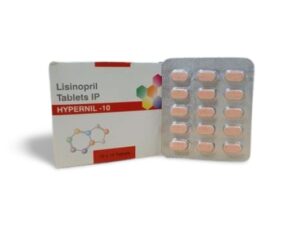Lercanidipine
INFORMATION ABOUT LERCANIDIPINE
Lercanidipine Uses
How Lercanidipine works
Common side effects of Lercanidipine
EXPERT ADVICE FOR LERCANIDIPINE
- Take it at the same time every day to help you remember to take it.
-
A sudden drop in your blood pressure may occur, especially when you first start taking Lercanidipine. To lower the chance of feeling dizzy or passing out, rise slowly if you have been sitting or lying down.
- It can cause ankle or foot swelling. To reduce the swelling, raise your legs while you are sitting down. Talk to your doctor if it does not go away.
-
It may cause dizziness. Do not drive or perform any activity that requires mental focus until you know how Lercanidipine affects you.
-
Inform your doctor if you are pregnant, planning a pregnancy or breastfeeding.
FREQUENTLY ASKED QUESTIONS FOR LERCANIDIPINE
Lercanidipine
Q. How should Lercanidipine be taken?
Swallow Lercanidipine tablet with a glass of water, do not break, chew or dissolve. Take Lercanidipine on an empty stomach, at least 15 minutes before a meal. This is because fatty food can increase the amount of Lercanidipine in your body and may cause side effects.
Q. How long does it take for Lercanidipine to show its effect?
Lercanidipine starts working on the day you start taking it. However, it may take 2 weeks to notice the full benefits of Lercanidipine. Since there are usually no symptoms of hypertension, you may not notice any difference unless you get your blood pressure checked. Keep taking this medicine regularly as advised by your doctor and keep a track of your blood pressure.
Q. It has been six months since I started taking Lercanidipine and my blood pressure is under control. Can I stop taking it now?
No, continue taking Lercanidipine even if you feel better and your blood pressure is under control. Sudden discontinuation of Lercanidipine may increase your blood pressure, and your chances of stroke or heart attack may rise. Usually, once you start taking any medicine for controlling blood pressure, you have to continue taking it a life long unless you cannot tolerate it.
Q. I have been told that I have to take Lercanidipine for several years. Is it safe to take it for a long time?
Lercanidipine is a blood pressure-lowering medicine. It does not cure hypertension but helps to keep the blood pressure under control for as long as you take it. For this reason, blood pressure-lowering medicines may need to be taken for a long period of time or even life long. Lercanidipine is safe and well tolerated by most people and does not have any lasting toxicity when taken for a long time. For best results, take it exactly as advised by the doctor. Do not stop taking this medicine without consulting your doctor first.
Q. Is it okay to take cyclosporine with Lercanidipine?
No, you should not take cyclosporine with Lercanidipine. The reason being, both the medicines interfere with each other’s working, thereby increasing the risk of getting the side effects of both medicines.
Q. My friend who is taking Lercanidipine is not allowed to take grapefruit or grapefruit juice. Why?
Grapefruit (chakotara) and grapefruit juice should not be consumed while taking Lercanidipine because it may increase the levels of Lercanidipine. This can cause a dip in blood pressure, lightheadedness and your friend may even faint.
Q. Should I restrict alcohol while taking Lercanidipine?
Yes, you should avoid taking alcohol while taking Lercanidipine since your blood pressure may fall further. As a result, you may feel dizzy or develop a headache.
Q. My uncle had once taken excess of Lercanidipine and had to be hospitalized. What can be the symptoms of excess of Lercanidipine and what should be done?
Taking excess of Lercanidipine may cause vomiting, sleepiness, heart attack and drastic fall in blood pressure resulting in fast heartbeat. However, the exact severity of these symptoms will depend on the amount of Lercanidipine ingested by the person. In some cases, it can even lead to unconsciousness. Seek emergency medical care in case of an overdose and depending on the patient’s condition, even hospitalization may be required. The patient may need to be monitored for 24-48 hours.






Reviews
There are no reviews yet.